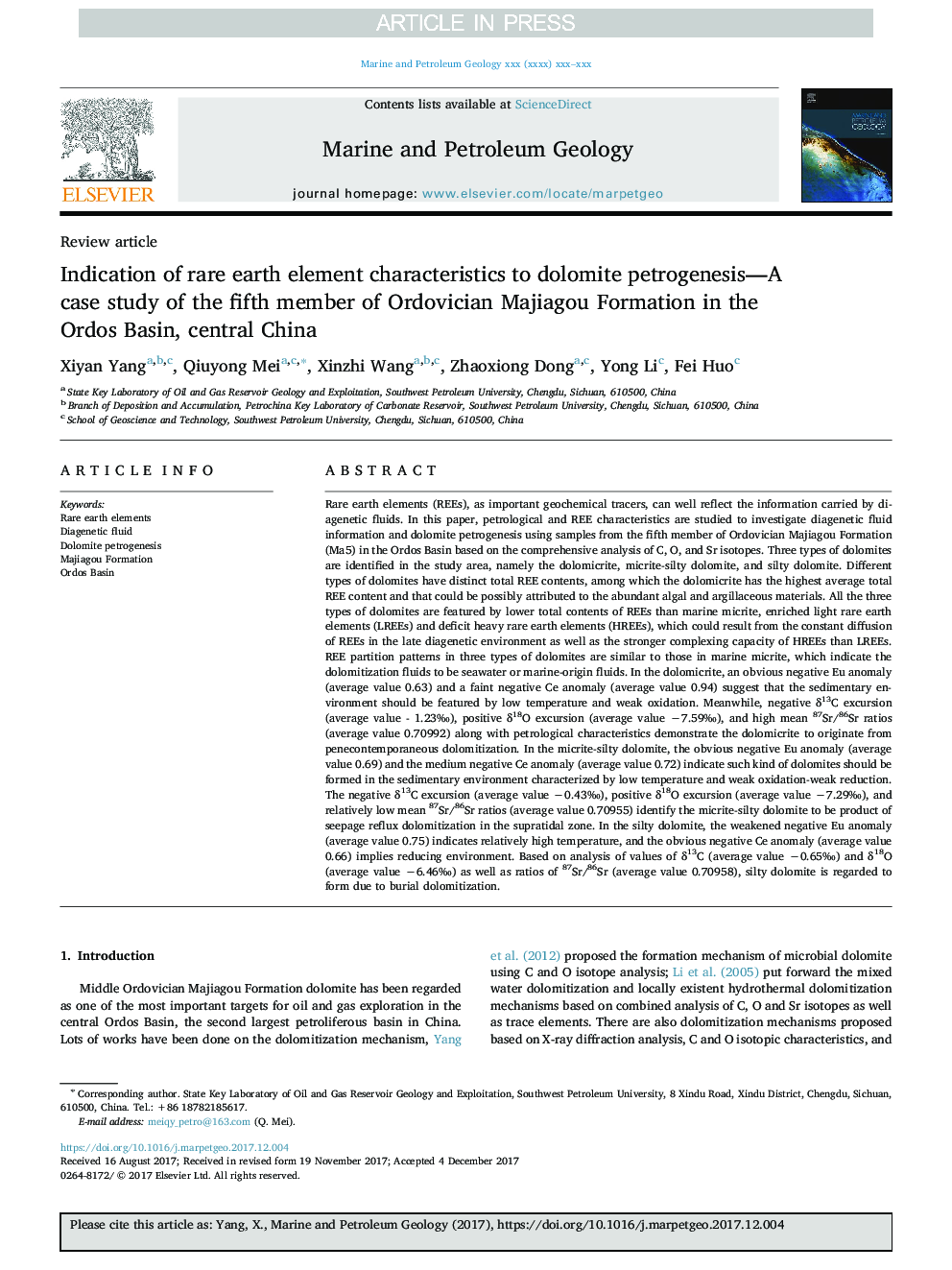| Article ID | Journal | Published Year | Pages | File Type |
|---|---|---|---|---|
| 8909087 | Marine and Petroleum Geology | 2018 | 13 Pages |
Abstract
Rare earth elements (REEs), as important geochemical tracers, can well reflect the information carried by diagenetic fluids. In this paper, petrological and REE characteristics are studied to investigate diagenetic fluid information and dolomite petrogenesis using samples from the fifth member of Ordovician Majiagou Formation (Ma5) in the Ordos Basin based on the comprehensive analysis of C, O, and Sr isotopes. Three types of dolomites are identified in the study area, namely the dolomicrite, micrite-silty dolomite, and silty dolomite. Different types of dolomites have distinct total REE contents, among which the dolomicrite has the highest average total REE content and that could be possibly attributed to the abundant algal and argillaceous materials. All the three types of dolomites are featured by lower total contents of REEs than marine micrite, enriched light rare earth elements (LREEs) and deficit heavy rare earth elements (HREEs), which could result from the constant diffusion of REEs in the late diagenetic environment as well as the stronger complexing capacity of HREEs than LREEs. REE partition patterns in three types of dolomites are similar to those in marine micrite, which indicate the dolomitization fluids to be seawater or marine-origin fluids. In the dolomicrite, an obvious negative Eu anomaly (average value 0.63) and a faint negative Ce anomaly (average value 0.94) suggest that the sedimentary environment should be featured by low temperature and weak oxidation. Meanwhile, negative δ13C excursion (average value - 1.23â°), positive δ18O excursion (average value â7.59â°), and high mean 87Sr/86Sr ratios (average value 0.70992) along with petrological characteristics demonstrate the dolomicrite to originate from penecontemporaneous dolomitization. In the micrite-silty dolomite, the obvious negative Eu anomaly (average value 0.69) and the medium negative Ce anomaly (average value 0.72) indicate such kind of dolomites should be formed in the sedimentary environment characterized by low temperature and weak oxidation-weak reduction. The negative δ13C excursion (average value â0.43â°), positive δ18O excursion (average value â7.29â°), and relatively low mean 87Sr/86Sr ratios (average value 0.70955) identify the micrite-silty dolomite to be product of seepage reflux dolomitization in the supratidal zone. In the silty dolomite, the weakened negative Eu anomaly (average value 0.75) indicates relatively high temperature, and the obvious negative Ce anomaly (average value 0.66) implies reducing environment. Based on analysis of values of δ13C (average value â0.65â°) and δ18O (average value â6.46â°) as well as ratios of 87Sr/86Sr (average value 0.70958), silty dolomite is regarded to form due to burial dolomitization.
Keywords
Related Topics
Physical Sciences and Engineering
Earth and Planetary Sciences
Economic Geology
Authors
Xiyan Yang, Qiuyong Mei, Xinzhi Wang, Zhaoxiong Dong, Yong Li, Fei Huo,
